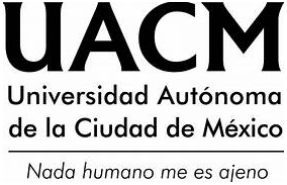TEQUILA: MAGICAL CENTER, TRADITIONAL TOWN. HERITAGE OR PRIVATIZATION?
DOI:
https://doi.org/10.29092/uacm.v6i12.134Keywords:
Tequila, landscape, heritage, cosmetic politicsAbstract
This paper discusses whether the distinctions granted by international organizations -and also by certain public policies- which ad value to some areas in ordinary towns; really trigger the promotion of values, traditions, environment preservation, regional development and social participation. Through the analytical readings of the cultural landscape of Tequila’s historical downtown, in Jalisco Mexico, we can notice the transformation of specific perimeters of a town similar to many others in Latin America, which gradually -and due to the economical and political intervention of both international organisms and the Mexican government- has turned from a rural area into an important tourist destination in Western Mexico and a referent in the construction of a new national identity, linked to successful commodities within the context of globalization.
Downloads
References
BONFIL BATALLA, G. (1997), “Nuestro patrimonio cultural: un laberinto de significados” en Enrique Florescano (comp.), El patrimonio nacional de México, Vol. I. México: Fondo de Cultura Económica (FCE), pp. 28-56.
CENTRO DE INFORMACIÓN DE LAS NACIONES UNIDAS (CINU) (2002), “La importancia del patrimonio cultural”. Artículo en línea disponible en http://www.cinu.org.mx/eventos/cultura2002/ importa.htm. 20 de diciembre de 2008.
FIGUEROA YÁÑEZ, G. (1995), El patrimonio, 2a ed. actualizada con la Ley núm. 19.335 de 1994. Santiago de Chile: Jurídica de Chile.
FLORESCANO, E. (comp.) (1993), El patrimonio cultural de México. México: FCE/Consejo Nacional para la Cultura y las Artes (CONACULTA).
FLORESCANO, E. (1997a), El patrimonio nacional de México, vol. I. México: FCE.
____________ (1997b), El patrimonio nacional de México, vol. II. México: FCE.
GARCÍA CANCLINI, N. (1997), “El patrimonio cultural de México y la construcción imaginaria de lo nacional”, en Enrique Florescano (comp.), El patrimonio nacional de México, vol. I. México: FCE, pp. 57-90.
GUTIÉRREZ Y GONZÁLEZ, E. (2002), El patrimonio. El pecuniario y el moral o derechos de la personalidad. México: Porrúa.
MALDONADO, S. Y. (23 de enero, 2004) “Apuesta turística al proyecto Mundo Cuervo”. Artículo en línea disponible en http:// www.cientouno.com/noticias.asp?ide=462. 30 de julio de 2005.
MINTZ, S. (1996), Dulzura y poder. El lugar del azúcar en la historia moderna. México: Siglo XXI.
PRATS, LL. (1997), Antropología y patrimonio. Madrid: Ariel. SECTUR (2005), “Pueblos mágicos”. En www.sectur.gob.mx/wb2/sectur/sect_Pueblos_Magicos. Diciembre, 2005.
TOVAR Y DE TERESA, R. (1997), “Hacia una nueva política cultural”, en Enrique Florescano (comp.), El patrimonio nacional de México, vol. I. México: FCE.
VAN YOUNG, E. (1994), La ciudad y el campo en el México del siglo XVIII. La economía rural de la región de Guadalajara, 1675-1820. México: FCE/Economía Latinoamericana.
VIGNA, A. (Julio, 2006), “Los falsarios del ecoturismo. Grandes proyectos privados en América Central”. Le monde diplomatique. Artículo en línea disponible en http://www.lemondediplomatique.cl/ Los-falsarios-del-ecoturismo.html. 20 de diciembre de 2008.
WILLIAMS, R. (1994), Sociología de la cultura. Barcelona: Paidós. WOLF, E. (2001), Figurar el poder. Ideologías de dominación y crisis. México: Centro de Investigaciones y Estudios Superiores en Antropología Social (CIESAS).
ENTREVISTAS
De León, Teófilo/(José de Jesús Hernández López) JJHL. (2005). Tequila, Jalisco.
Dorantes, Carlos/JJHL (2006). Tequila, Jalisco. Enríquez, Anselmo/JJHL (2005). Tequila, Jalisco. Hernández, Dolores/JJHL (2005). Sindicato de Tequila Sauza. Tequila, Jalisco. Maravillas, Filiberto/JJHL (2005). Tequila, Jalisco.
Downloads
Published
Issue
Section
License
This Journal is licensed under Creative Commons Mexico 2.5. It is allowed to reproduce and disseminate the contents of the Journal for educational or research purposes, not for profit, as long as they are not mutilated and cite the source (Andamios, Revista de Investigación Social) and the author.
The copyright of the articles published in Andamios, Revista de Investigación Social are transferred by the author(s) to Universidad Autónoma de la Ciudad de México when the originals have been accepted, so that they are published and distributed both in the printed and electronic versions of the Journal. However, as established by law, the author(s) retains their moral rights. The author(s) will receive a form of assignment of copyright that they must to sign when their original has been accepted. In the case of collective articles, the signature of one of the authors will suffice, provided that the latter has obtained the consent of the others.
Authors may use the material of their article in other works or books published by themselves, with the condition of quoting Andamios as the original source of the texts.
The articles contained in this publication are the responsibility of their authors and do not compromise the official position of Andamios, Revista de Investigación Social of the Universidad Autónoma de la Ciudad de México.


